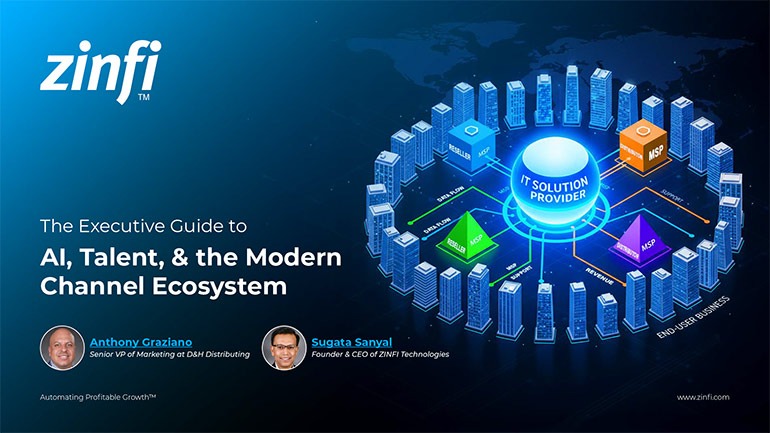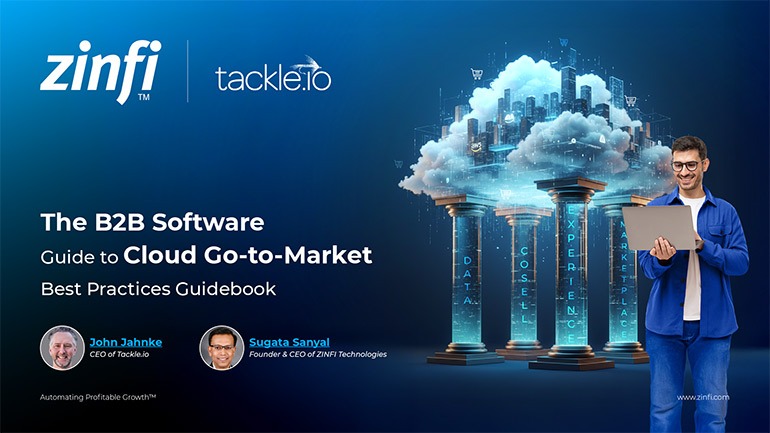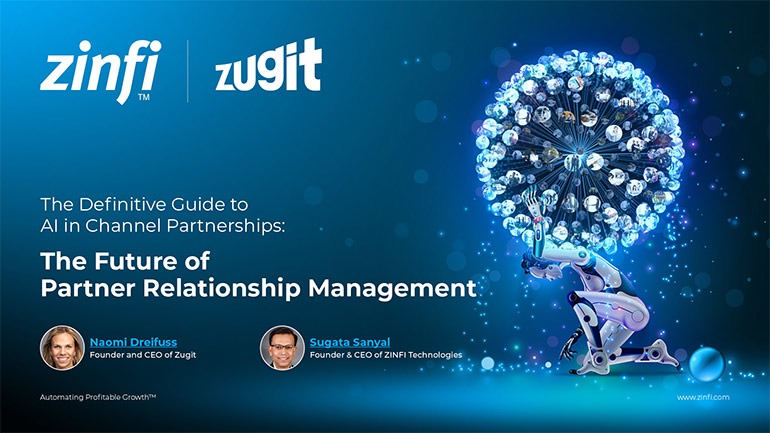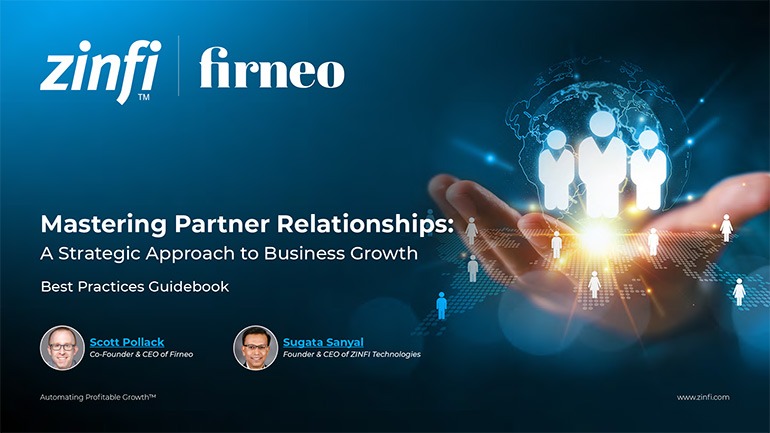Best Practices Articles

Partner Relationship Management: How Tech Partner Models Evolved Over Time
As technology rapidly advances, business models have transformed just as swiftly. Companies once depended on resellers to sell products. These resellers added services and sold the full package to end customers.
Today, that model has transformed. Vendors now work with many different types of partners. These include managed service providers, cloud consultants, system integrators, software vendors, and marketing firms. They all play a role in the customer journey.
This shift gave rise to a new approach—partner relationship management. It focuses on more than sales. It focuses on trust, communication, and shared goals.
Customers now expect complete solutions. They want reliable support and strong relationships. Vendors must work closely with partners to deliver what customers need. That means building better systems and deeper partnerships.
Partner relationship management is the tool for this job. It helps companies manage every step of the partner experience. From recruitment to enablement, from lead sharing to performance tracking, PRM keeps it all together.
Let’s explore how this model evolved—and why it matters today.
-
The Early Days of Partnering
In the early 2000s, resellers played a simple role. They bought products, added services, and sold to customers. Vendors gave them discounts and basic support.
But soon, things started to change. Customers needed more. They wanted guidance, not just products. They wanted help with installation, support, and updates.
Vendors realized that to grow, they needed stronger partners. They started offering certifications and training programs. This helped resellers become more skilled.
These programs also built trust. Partners felt supported. Vendors promised not to sell directly to customers. Instead, they worked with partners as a team.
This was the beginning of partner relationship management. People hadn’t started calling it that yet. But the idea was there.
Companies created shared goals and better processes. They kept track of deals and training. They built loyalty through enablement and collaboration.
The stronger the relationship, the more successful both sides became. Over time, these partnerships grew more important.
Even then, technology played a role. Vendors used spreadsheets and email to manage partner activity. As things scaled, companies realized they needed better tools. Early PRM software solutions helped centralize partner data and provided visibility into sales pipelines and program engagement.
-
The Shift to Services and Long-Term Value
Around 2010, cloud computing and SaaS took over. Customers didn’t want to buy servers anymore. They wanted services they could pay for monthly.
This changed everything. Resellers had to shift. Many became managed service providers. They offered cloud services, helpdesk support, and data backups.
One-time sales no longer worked. Vendors now needed partners who could deliver ongoing value. This meant regular contact, updates, and support.
Partner relationship management became critical. Vendors had to track more data. They had to know which partners were active. They had to help partners stay current on technology.
Instead of a few big deals, there were now many small ones. That meant more coordination. It also meant more need for automation.
PRM software became essential. It helped vendors onboard new partners. It helped track certifications. It let partners register deals and access resources.
At this stage, the term channel partner management became more common. Vendors managed entire ecosystems of partners—VARs, MSPs, distributors, and ISVs. Each had different needs, incentives, and sales processes.
Channel partner management meant designing programs that fit each partner type. It required strong tools to keep everyone aligned. And it relied on data to ensure performance stayed on track.
-
Security, Intelligence, and Smarter Systems
Today, cybersecurity is a priority. Every product, service, and partnership must be secure. Customers demand it. Regulators require it.
Partners must be ready. They need tools, knowledge, and access to the latest best practices. That’s why partner enablement is more important than ever.
Vendors now train partners on security protocols. They update them on compliance rules. They give access to alerts and threat monitoring.
Partner relationship management platforms include security training. They also include tools for managing secure deployments, credentials, and audits.
Meanwhile, artificial intelligence is changing how vendors manage partners. AI can sort partners by performance. It can flag risks. It can suggest where to invest.
AI tools also personalize the partner experience. They offer smart recommendations. They automate content creation. They help improve engagement.
With AI, even small partners can compete. They get tools that help them act like large businesses. They serve more customers without needing big teams.
Smart PRM software includes these features. It connects AI with reporting. It shows vendors where they need help. It helps them focus their resources.
Together, security and AI make partner relationship management smarter, safer, and more scalable.
-
Training, Support, and Building Trust
Partners need help to succeed. Training is the foundation. Without it, partners can’t sell or support products effectively.
That’s why vendors invest in partner enablement. They provide guides, webinars, demos, and certifications. These tools help partners feel confident and ready.
Good training is not a one-time task. It must be ongoing. As products change, partners must stay up to date. A strong PRM program makes that possible.
Modern PRM systems include learning portals. These portals track who has completed training. They remind partners when updates are due.
This kind of partner portal is now a must-have. It centralizes content. It shows partners where to find tools, training, and support. It keeps communication clear and easy.
The partner portal also builds transparency. It helps vendors and partners see the same data. This avoids confusion. It also creates trust.
Trust is key. Without trust, partners won’t commit. They won’t invest their time or energy. But when vendors support partners well, both sides grow.
Partner relationship management helps vendors build that trust. It shows partners they matter. It helps vendors respond quickly when problems arise.
When partners feel valued, they improve their performance. They sell more. They retain more customers. They stay loyal.
-
A Look Ahead—Where Partnering Is Going
The future of partnering is exciting. It’s also more complex. There are more types of partners. More tools. More markets. And more data.
Partner relationship management will be the system that keeps it all together. Vendors will use smart tools to track results. They’ll personalize programs based on data. They’ll help partners grow into new markets.
The line between vendor and partner will blur. They will operate as one team. Sharing insights. Building solutions. Solving problems together.
PRM software will continue to evolve. It will be faster, smarter, and more flexible. It will adapt to partner needs in real time.
AI will be at the core. It will find trends. It will predict outcomes. It will recommend actions. All of this will help vendors stay ahead.
The partner portal will become even more interactive. It won’t just be a content library. It will be a workspace. A place to plan, execute, and grow together.
Channel partner management will also expand. Vendors will connect with new types of partners—consultants, influencers, and even customers who refer business. Managing all these players will require better segmentation and flexible programs.
Partner enablement will go beyond training. It will include co-development. Joint marketing. Shared innovation. Vendors will invest in partner success like never before.
Conclusion: A Future Built on Partnership
Partnerships have come a long way. From basic reselling to complex global ecosystems, the journey has been big.
Partner relationship management is what makes this all possible. It gives structure to complexity. It adds speed. It creates clarity.
It helps vendors treat their partners like real extensions of the team. Not just another channel. But a core part of strategy and growth.
The companies that succeed in the future will invest in strong PRM systems. They will also focus on smart partner enablement, flexible partner portals, and effective channel partner management.
They will grow faster. Serve better. And build relationships that last.
That is the promise—and the power—of modern partner relationship management.
Best Practices Guidebook
 Modernizing Channel Marketing: AI and Ecosystem Enablement Best Practices
Modernizing Channel Marketing: AI and Ecosystem Enablement Best PracticesDownload for FREE
 The Channel’s Shift to Partner-Led With AI Best Practices
The Channel’s Shift to Partner-Led With AI Best PracticesDownload for FREE
 Hyperscalers, ISVs, and AI: Shaping the Future of B2B Software Distribution
Hyperscalers, ISVs, and AI: Shaping the Future of B2B Software DistributionDownload for FREE
 Definitive Guide to a Partner Ecosystem-First Sales Strategy
Definitive Guide to a Partner Ecosystem-First Sales StrategyDownload for FREE
 The Partner-Led Digital and AI Transformation Best Practices
The Partner-Led Digital and AI Transformation Best PracticesDownload for FREE
 Startup Talent Recruitment: Hiring Missionaries, Not Mercenaries
Startup Talent Recruitment: Hiring Missionaries, Not MercenariesDownload for FREE
 The Future of Partner Relationship Management with AI in Partnerships
The Future of Partner Relationship Management with AI in PartnershipsDownload for FREE
 Cybersecurity for the 99%: Strategies from the Frontline
Cybersecurity for the 99%: Strategies from the FrontlineDownload for FREE
 Mastering Partner Relationships: A Strategic Approach to Business Growth
Mastering Partner Relationships: A Strategic Approach to Business GrowthDownload for FREE
 Mastering Partner Relationship Management: Keys to SaaS Channel Success
Mastering Partner Relationship Management: Keys to SaaS Channel SuccessDownload for FREE
 Navigating the AI Revolution: Guide for Partners in the Microsoft Ecosystem
Navigating the AI Revolution: Guide for Partners in the Microsoft EcosystemDownload for FREE
 Mastering the Modern Buyers Journey: Sales Leader’s Guide to AI & Engagement
Mastering the Modern Buyers Journey: Sales Leader’s Guide to AI & EngagementDownload for FREE










